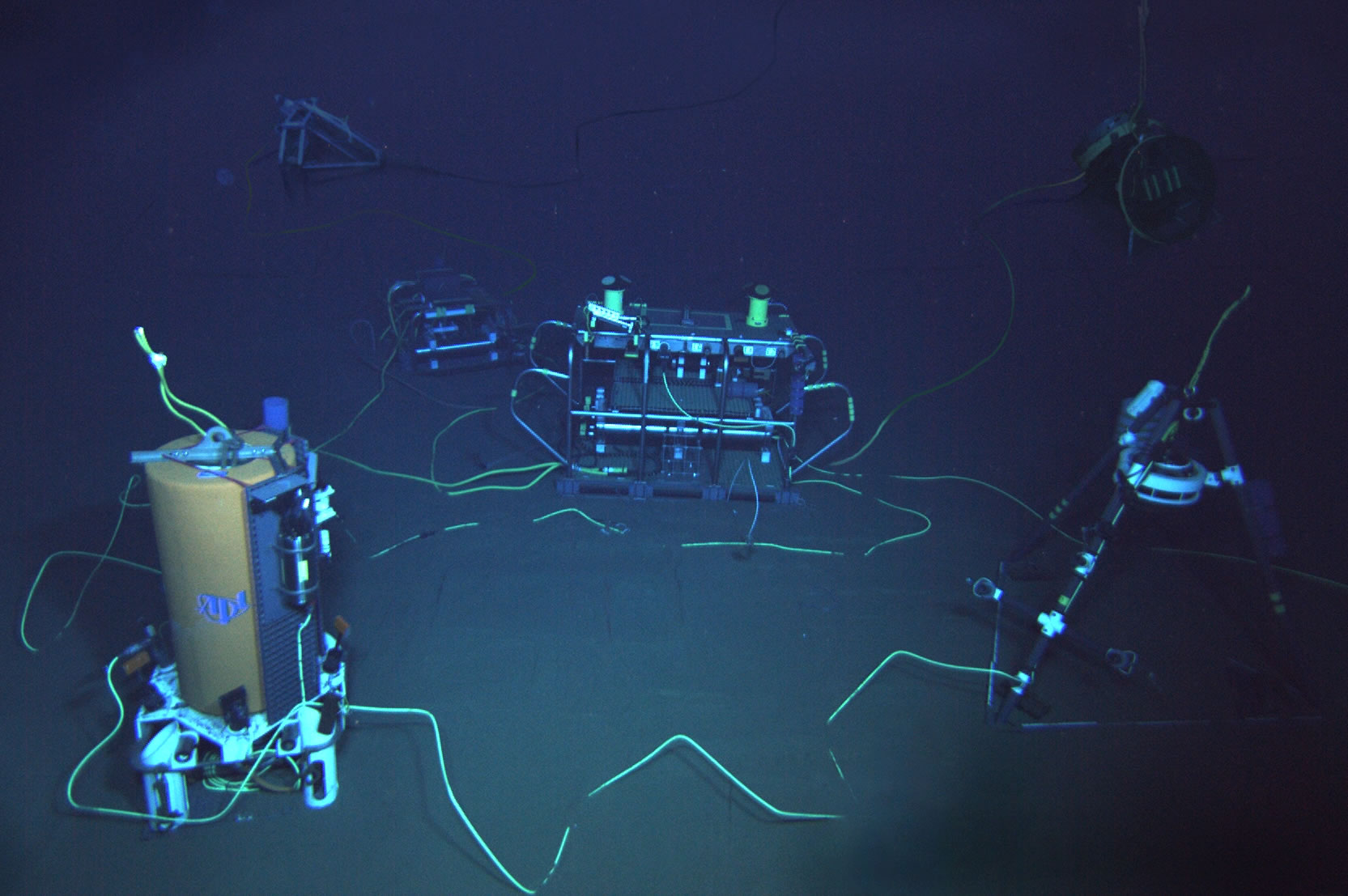Click below for real-time data

The University of Hawaii's ALOHA Cabled Observatory is located 100 km north of the island of Oahu, Hawaii (22 45'N, 158W) in the North Pacific Ocean. It provides real-time oceanographic observations from a depth of about 4,800 m via a submarine fiber optic cable that comes ashore at Makaha on Oahu. In addition to ocean sounds, continuous observations of temperature, salinity, and ocean currents are obtained and shared with the oceanographic community and the general public.
The ALOHA Cabled Observatory is located in the Pacific Ocean
at 22 45'N, 158W, 4728m depth.
June 6, 2021: 10-year anniversary of continuous temperature, salinity, currents, and acoustic observations.(Watch video from cruise)
International Registry of Seismograph Stations Station Code ALOHA
ACO on Voice of the Sea TV
Meet the scientists who study and analyze data collected at ACO. Watch as they pilot Remotely Operated Vehicle Lu'ukai to the seafloor to maintain and improve the capabilities of the observatory. Click here to watch.
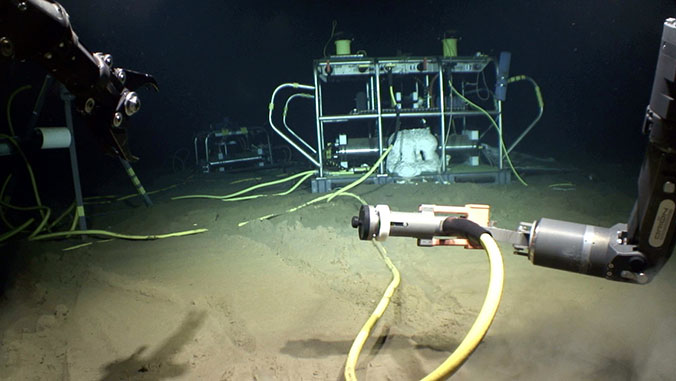
ACO, the deepest cabled ocean observatory celebrates 10 years of seafloor data
“Creating a continuous 10-year data set of temperature, salinity, velocity, acoustics/ocean sound—which are all ‘essential ocean variables’ as defined by the Global Ocean Observing System—is quite a feat,” said Bruce Howe. Click here to read more.

An ACO Cruise Blog by Jessica Lotts
Jessica Lotts documents the June 2017 ROV Lu'ukai Testing and ACO cruise. Click here to read about her exciting experience.
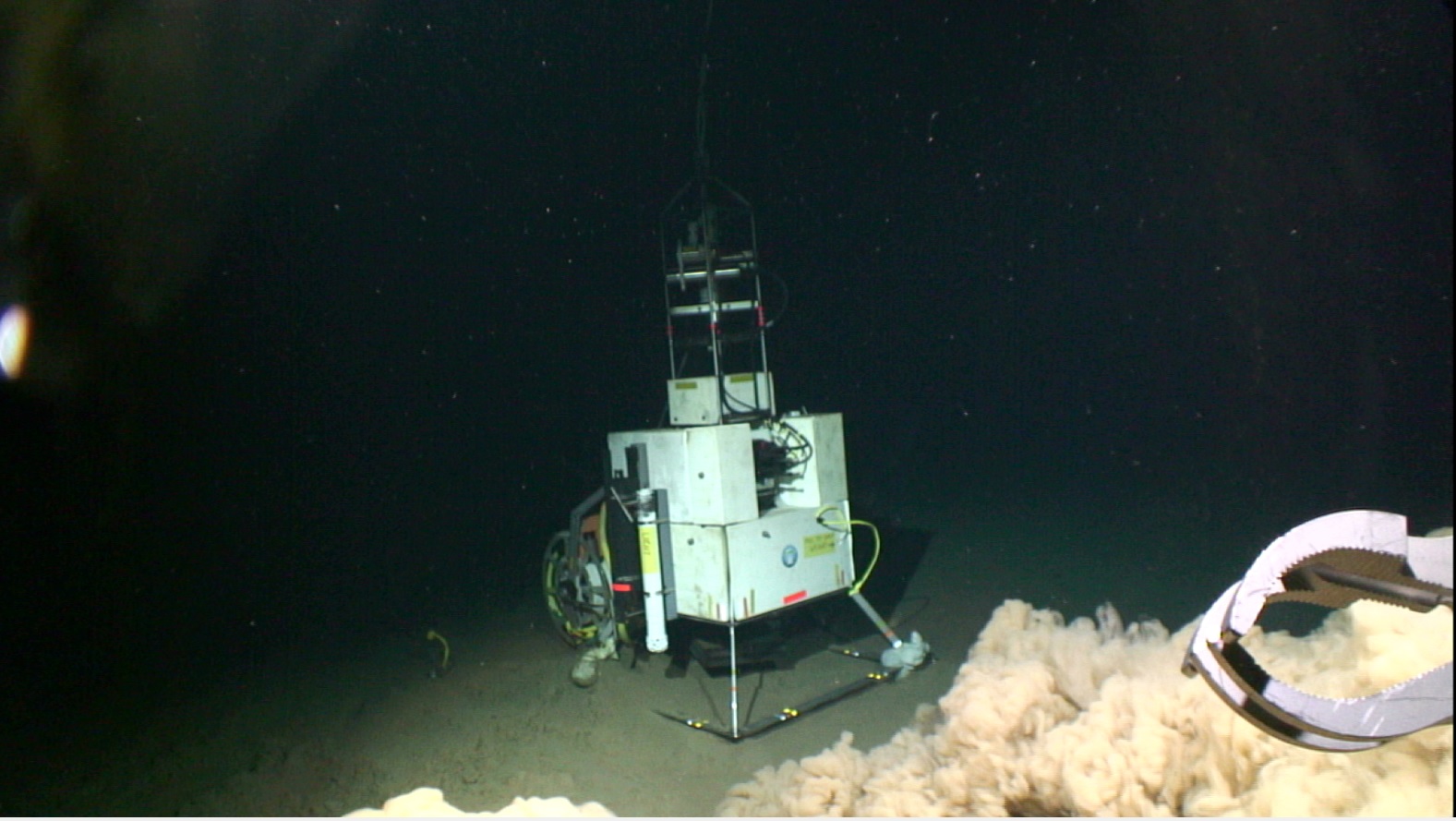
Recent Workshop - September 23-25, 2016
Ocean observing infrastructure and sensing — Technical lessons learned and best practices.
Click here for more information.

On June 16, 2016, Brian Chee talked about the ACO on the Sunrise Segment of Hawaii News Now.
See the Hawaii News Now interview here.
B. Chee was also interviewed by TechTarget. The article can be found here.

New ACO insturments were installed during the ACO-3 cruise on 2014/11/01: video-camera, lights, CTD, ADCP, acoustic modem.

8.2 magnitude Chile earthquake recorded by the ACO
April 2nd, 2014 Chile earthquake, magnitude 8.2, detected by the ACO broadband hydrophone. The x axis is UTC time in hh:mm:ss. The red curve shows the energy band-passed between 0.01-0.15 Hz and the blue curve is the data from 3.5 -10 Hz. The large high frequency signal is the T-phase arrival from the earthquake source. (graphic by Fred Duennebier)
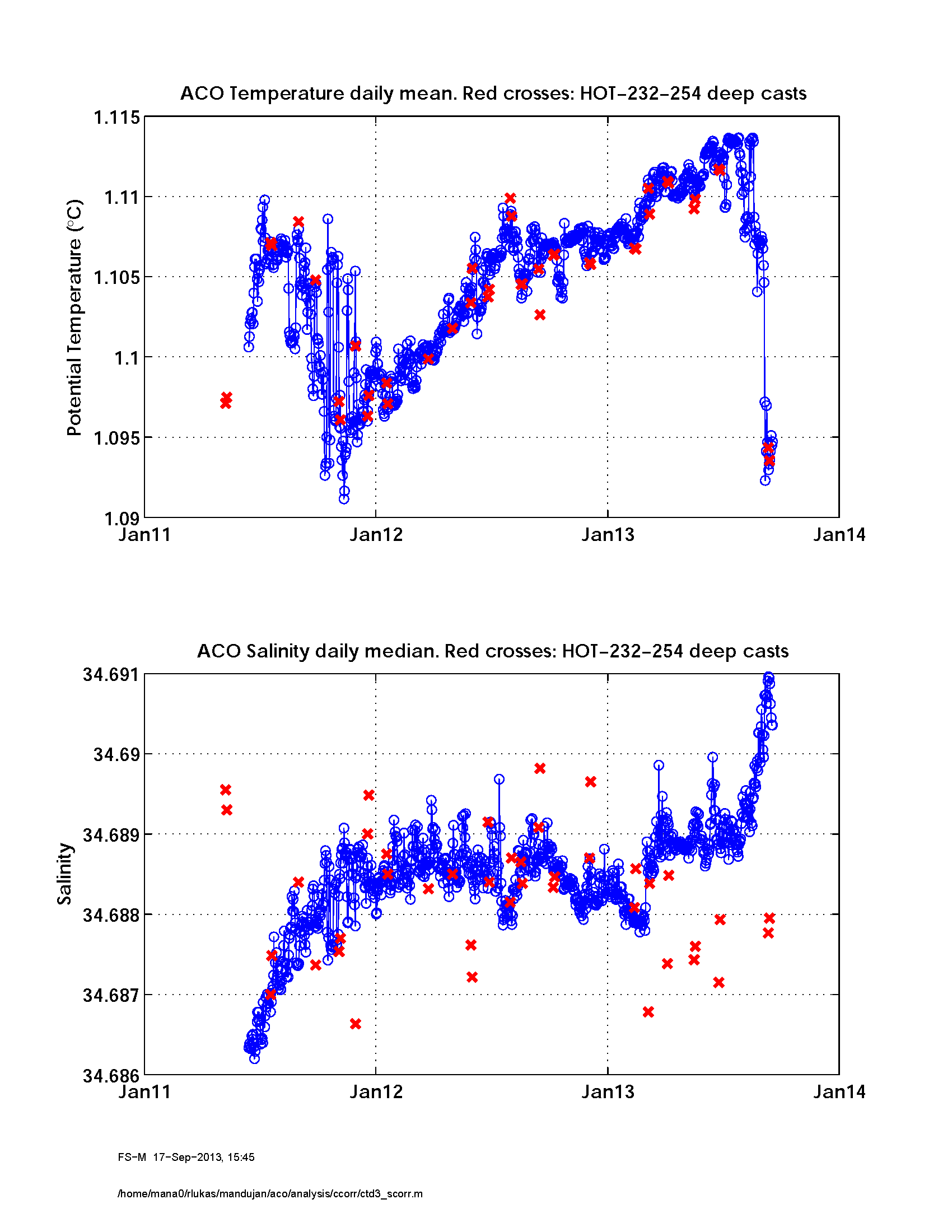
2011-2012 and 2013 cold water events observed by ACO
This graphic shows potential temperature and salinity from the ALOHA Cabled Observatory, along with the values from near-bottom CTD measurements about 1.8 km away during HOT cruises, the most recent being HOT-254 that returned on September 14, 2013.
This shows that a very dramatic cold event occurred over the last three weeks, with a peak-to-trough change of 0.02 C. It is typically thought that day-to-day changes in the abyss (away from deep convection) are only of order 0.001 C.
We can see a drawn out warming/recovery during the interval between the two cold overflow events. This is consistent with a relatively slower turbulent flux of heat downward in the interim between Kauai Deep ventilation events.
The CTD measurements are taken over only a few minutes. The ACO values are daily averages to average out internal tides (and after removing observatory signatures.)
The ACO Microcat salinity had a mean offset prior to February of this year of ~0.02, with a drift of about 0.01 over the prior months. There is a clear jump in calibration earlier this year, but we are not sure at this point whether the rate of drift has changed from before.
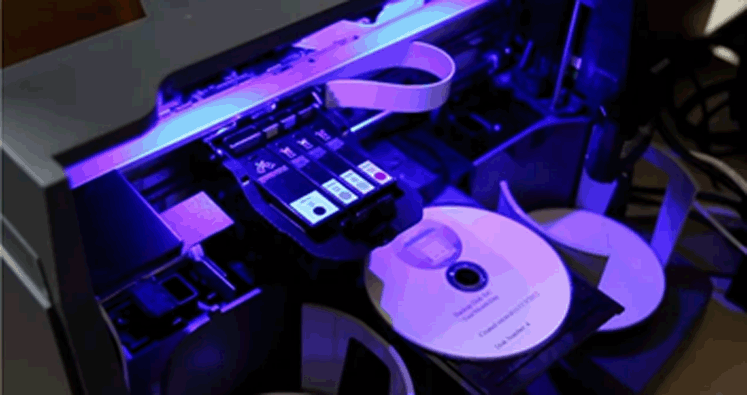
Primera video on ACO's use of Blu-Ray robot
Bruce Howe (PI), Roger Lukas (Co-PI), and Brian Chee talking about the Primera Blu-Ray burner/printer robot that's currently in use to archive ACO Hydrophone and engineering data to an archival media. The Blu-Ray burner/printer was donated by Primera Corporation.
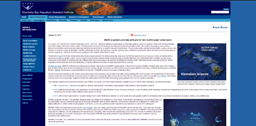
ACO featured on MBARI website
The ACO was featured on the Monterey Bay Aquarium Research Institute(MBARI) website on August 15, 2011. The article describes the connections between MBARI's SIAM/SSDS software and the ACO.

2011-2012 cold bottom water event observed by ACO
Daily mean temperature at 4728m compared to Hawaii Ocean Time-series CTD profiles.
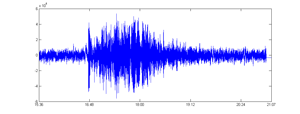
7.4 magnitude Guatemala earthquake recorded by the ACO
The earthquake epicenter was 24 km south of Champerico, Guatemala at 2012-11-07 16:35:50 UTC. The first signal arrival to the ACO was at about 16:46 UTC.

7.6 magnitude Philippines earthquake recorded by the ACO
The earthquake epicenter was 96 km East of Sulangan, Philippines at 2012-08-31 12:47:34 UTC

Microearthquake recorded by the ACO
The ACO hydrophone recorded a swarm of microearthquakes on June 4, 2012.

Humpback whales heard near the ACO on May 15th!
The ACO hydrophone detected a pod Humpback whales on May 15, 2012.

Whales migrating to Alaska for the summer
Humpback whales are now leaving their winter home near Hawaii and heading back north. Rather than "singing", they make simple repeated calls to navigate and let others know where they are, The plot shows sound power by color, with the reddest colors being the loudest. The vertical scale is frequency in Hertz, and the horizontal time scale is in seconds. Each loud call (clearest between 40-100 Hz) is followed about 3 seconds later by a similar weaker signal, likely a reflection off the ocean surface, then another signal about 6.5 sec after the first, likely reflected off the ocean floor, ocean surface, and then back down to the hydrophone at the ocean floor.

The 8.6 magnitude Sumatra earthquake recorded by the ACO
A magnitude 8.6 earthquake struck off the coast of the Indonesian island of Sumatra on April 11, 2012. The event was recorded by the ACO hydrophone as shown on the left.

A 3.2 Magnitude earthquake shaking up the ACO
Here's a small Magnitude 3.2 earthquake recorded at ACO at a distance of 157 km east of Station ALOHA in the deep-ocean. The quake, located by HVO was at 21.9367N -156.6795 on Feb 19, 2012 at 09:18Z.
Listen to our new Shoutcast server
Listen to our new Shoutcast server with embedded web player to listen to whales near the ACO.
Embedded web player tested with IE9, Firefox, Chrome, and Opera. 64 listeners maximum. Click *here* to listen to the hydrophone in
real-time.

Fin whales heard near the ACO on November 21st!
The ACO hydrophone detected Fin whales on November 21, 2011. It is expected that more whales will be heard near the ACO site in the coming months. Click *here* to listen to the hydrophone in real-time and maybe you can hear a whale passing by (Real Player required PC / Mac).

New videos of Deep Sea Creatures visiting ACO
The ACO video camera was able to record the visits of two deep sea creatures. Colleagues in the Biological Oceanography division of SOEST are looking towards using videos similar to these to help understand the behavior of deep water shrimp and sea cucumbers.
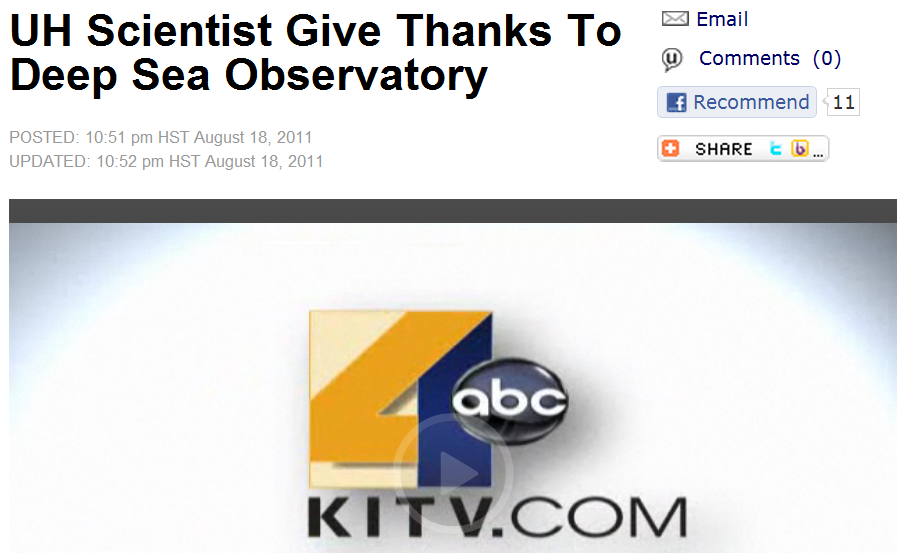
ACO featured on KITV News
5 km beneath the surface of the ocean, the Aloha Cabled Observatory brings an infrequently observed and little understood habitat into light. Through cables and oceanographic instruments, scientists are able to look at the seafloor and in a way they rarely can: instantly and for years to come.
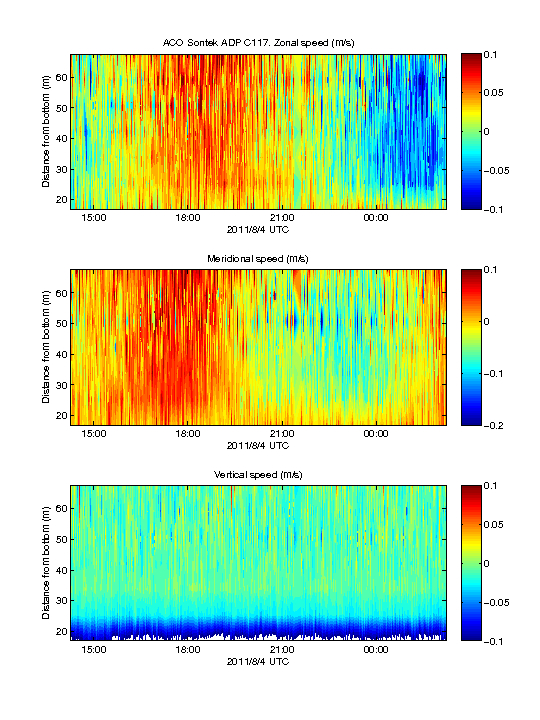
See Data and Plots
Connecting Station ALOHA to scientists on Oahu is a retired AT&T telephone cable. The observatory has the capacity to listen to ocean through hydrophones. The temperature and salinity in the water are measured. Through acoustic sensing, the current profiles above the seafloor are being plotted. This data is sent back to Oahu at the speed of light into the hands of those who analyze it to discover patterns of ocean circulation, ocean-atmosphere interactions and climate change.

The ACO
The ALOHA Cabled Observatory (ACO) is a system of hardware and software that extends electric power and the Internet offshore, supporting sustained real-time observations in the deep ocean. The ACO is connected to Oahu, Hawaii by the HAW-4 telecommunications cable transferred to the project by AT&T in 2007.
